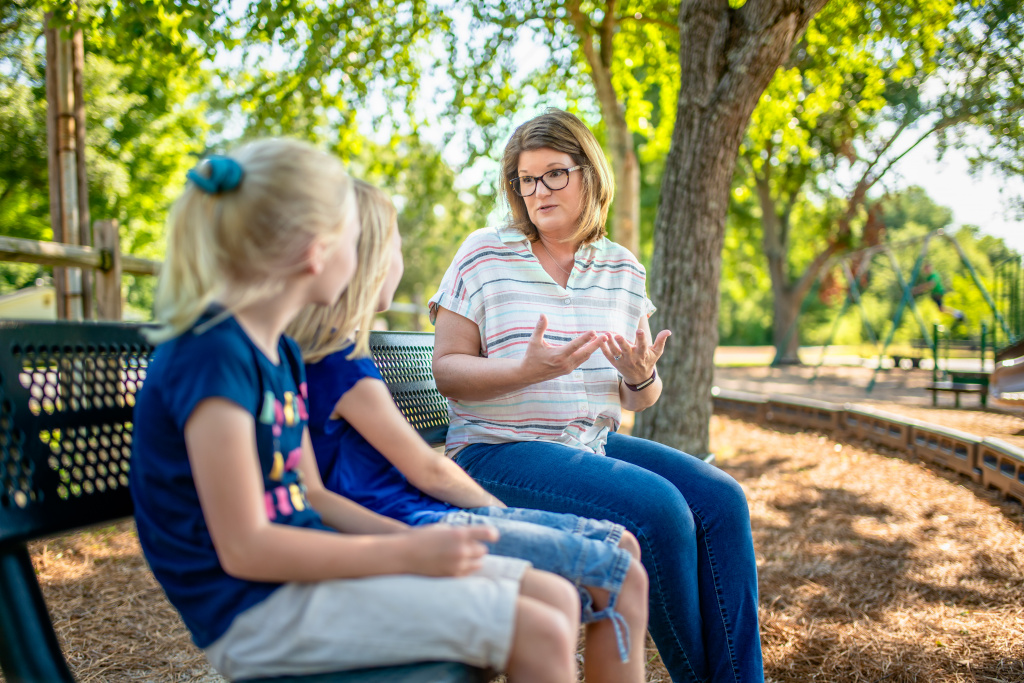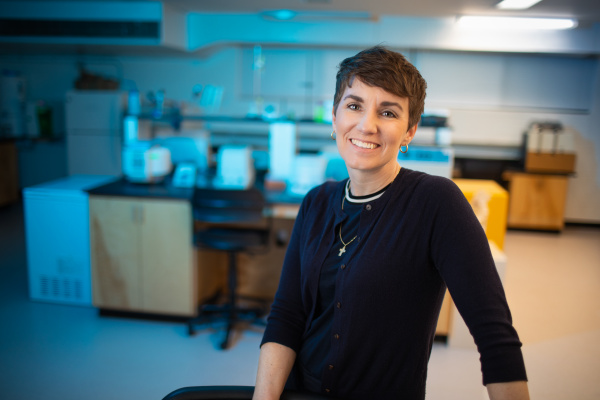“When I came home, I knew that I had to do something to help hurting children in my local area,” said Dr. Heather Hancox, associate professor of education at BJU. She had just attended a week of training at the National Child Protection Training Center in Winona, Minnesota, to help her prepare students to protect and support children.
Hancox spent the week learning about neglect, physical abuse, emotional abuse, sexual abuse and parental drug usage. “The content of the sessions was just heart-breaking,” she said.
During one session, a speaker mentioned the guardian ad litem (GAL) program. “The purpose of the program is to ensure that children have a voice in Family Court, … which handles cases that the Department of Social Services (DSS) brings against parents or guardians,” Hancox explained. “Without a GAL, no one would be there just to speak for the child or children.”
“(After the training), I looked up the local GAL program and jumped in with both feet,” she said. “God takes the protection of children very seriously, so I knew that I should, too. Also, as a mother of six, I just knew that I’d want someone to be willing to help my kids if they were in need.”
After passing a background check, an interview and 30 hours of training on children and legal processes, Hancox became a GAL in 2012.
A Case Study
After accepting a case, a GAL has many responsibilities that accomplish the goal of “determining and representing the best interest of the children,” Hancox said.
Investigation
First, the GAL learns as much about the case as possible. “The idea behind investigating is to assess the family situation independently instead of simply relying on what DSS reports. DSS might be biased or misinformed,” explained Hancox.
Interviews with the caseworker, DSS investigator, parents, grandparents, and especially the children are crucial. “The GAL interviews anyone who can shed light on the family situation without being intrusive — (so) no contacting a parent’s boss or asking neighbors, for example,” she said.
The caseworker or investigator also provides the GAL with DSS and medical records on the family and school records for the children.
Family Team Meetings
The GAL also attends a family team meeting. At the beginning of a case, extended family and a third-party facilitator meet to identify family problems and plan their solutions. Hancox said, “One big idea behind these meetings is to garner support and accountability for parents as they pursue change, and it’s a great opportunity for the GAL to meet a lot of people who are involved with the kids.” She added, “(Plus), I always glean a lot of information about the family just from being a part of the conversation.”
Although the GAL attends the meeting as an observer, Hancox sometimes joins the conversation. Said Hancox: “If the family is struggling for ideas, I will chime in. But the focus of these meetings is to bring the family together around solutions that they create, so I am there mostly for support. At most, I nudge them towards positive steps. Mostly, I like to point out any strengths that I see in the kids and family to encourage them.”
Court Proceedings
Except for the first hearing within 72 hours of removing children from their parents, the GAL attends each court date of the case — typically two to three per year.
About a month after beginning the case, the GAL attends the merits hearing in which the judge examines evidence for findings against the parents. If there is enough evidence and the parents agree to the findings, a treatment plan — requirements to be met for the children’s return — is made and enforced at the hearing.
The judge determines the treatment plan based on a plan from the DSS and recommendations the GAL writes in a report. “Usually, the treatment plan includes a psych evaluation, substance abuse screening or treatment, parenting classes and maybe domestic violence classes — specific to victim or perpetrator,” Hancox said. “The parents are also required to have a safe and appropriate home and to pass random drug screens.”
If the parents disagree with the findings, the treatment plan is made and enforced at a subsequent trial.
Afterward, permanency planning hearings are held every six months to monitor the parents’ progress. “Permanency is huge for children, so the judge will usually not allow parents more than 18 months to complete the treatment plan without scheduling a trial to terminate parental rights and allow the children to be adopted,” Hancox said.
The GAL participates in court by providing written reports on the children’s safety and well-being — which the judge reads before determining a ruling — or testifying on behalf of the children if the GAL thinks it necessary. “The GAL is the only one who can speak about what they have heard without it being ruled hearsay because the children, (who are not allowed in Family Court), cannot be there to speak for themselves,” Hancox explained.
Between Court Dates
The GAL remains involved in the case as the parents work on the treatment plan. “My main focus is (to ensure) the kids (are) being well-cared for where they are placed,” said Hancox. “Things come up like the children being moved from foster care to (the home of) a relative. This requires me to meet the new caregiver and approve of the physical space in the home — private space for the children, electricity, running water, enough food in the home (and) no big safety hazards.
“I also talk to foster parents or kinship caregivers to make sure the kids are healthy and there are no new behavior problems (since) stressed kids often have behavior issues. … I (also) try to ask (the children) questions to find out how well they are being cared for without coming right out and asking questions that would stress them. For example, I might ask them what their favorite supper is at the foster or group home to start a conversation to find out how well they are being fed.”
If children have a counselor, the GAL can also access progress reports to see how they are doing. Additionally, monitoring visits with parents at local parks or through one-way mirrors at the DSS facility informs the GAL about their well-being. “It is very helpful to see how children respond to their parents and vice versa,” Hancox said.
If the child is in foster care, the GAL shares those details at Foster Care Review Board meetings every six months.
The GAL is also responsible for keeping tabs with the parents as they progress through their treatment plan.
Ministry to the Children
In order to prioritize the children, “the GAL … visits (them) once each month and completes detailed reports about each child’s physical, emotional and educational needs,” said Hancox.
The children especially struggle emotionally. Said Hancox: “The children are often traumatized because of neglect, disappointment and maybe even abuse when the parent is under the influence. They are also often guarded and have been told to lie to authorities. It may take months before they will be honest with me about what has happened to them and about what they fear may happen in the future if they are returned home.
“I will usually spend an hour or so a month with them if they are old enough to communicate well. If the child is a toddler or infant, I will not need a whole hour per visit. (But) if the child is a teen, they may need to talk for longer.”
Because she consistently interacts with the children, Hancox is able to impact them. “The main way that I impact children as a GAL is (by providing) a consistent relationship throughout their case. Caseworkers change frequently and even placement can change. I am the constant. (And) most cases last one to three years. That means that I am able to develop a real relationship with the children. When it is appropriate, I am even able to give spiritual guidance. … In some cases, I am also able to provide guidance to parents who are seeking change.”
Transferring Experience to the Classroom
“Being a volunteer GAL has opened my eyes to the needs of hurting children in a very real way,” said Hancox. “I feel that I am better able to understand and teach the needs of children and teens because of my interactions with ‘my kids.’” In her classes on teaching methods, Hancox discusses a teacher’s responsibility to identify, report and interact with abused or neglected children. Additionally, she can better teach how maltreatment affects child development in her development class.
Being a GAL is an opportunity for Christians to care for others in the community. Hancox said, “Anyone with a few extra hours to visit children and the flexibility to be in court a few times a year could really have a huge impact on hurting families.”
For more information on becoming a guardian ad litem in Greenville County, visit the website of the local GAL office.
See Also: Senior Spotlight: Touching Lives Through Education








